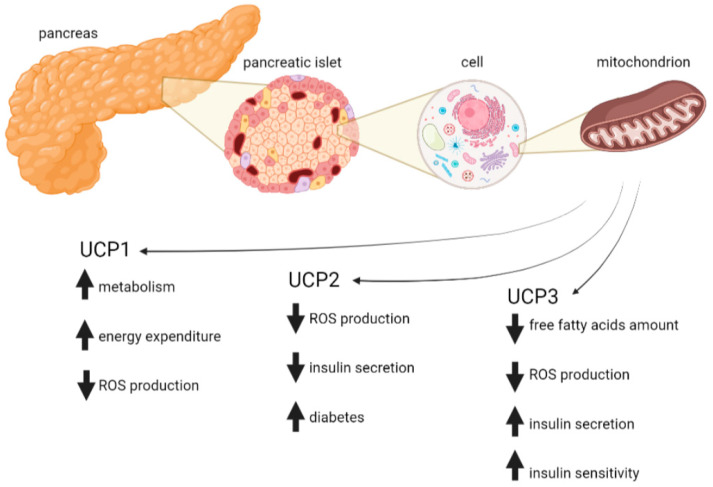Figure 3.
Role of pancreatic UCPs in T2D. The primary role of UCP1 in brown adipose tissue is heat production in a process known as nonshivering thermogenesis. Increased metabolism in pancreatic cells expressing UCP1 increases energy dissipation and reduces mitochondrial ROS production, thereby reducing oxidative stress and the progression of T2D. UCP2 acts as an antioxidant whose expression is stimulated by ROS. Increased UCP2 activity leads to increased proton leakage, which in turn decreases ATP synthesis and the formation of ROS. At the same time, it reduces glucose-stimulated insulin secretion, which may exacerbate T2D. UCP3 affects insulin secretion differently than UCP2. When UCP3 is activated, it reduces ROS production and increases fatty acid oxidation and insulin secretion. Created with BioRender.com.

